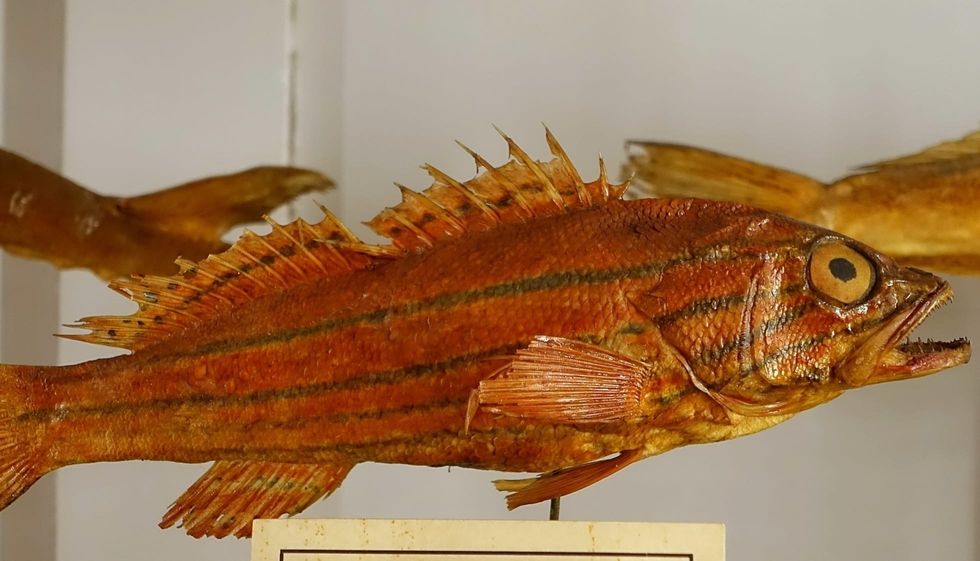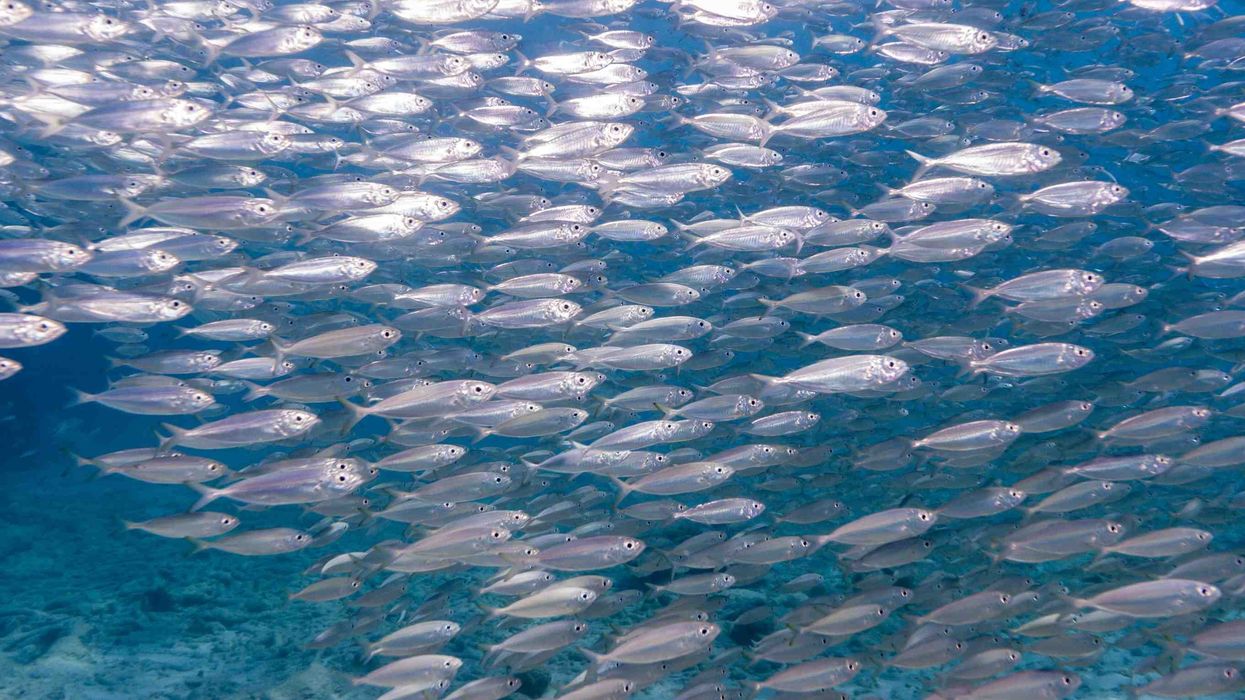The Serranus cabrilla of the Serranus family, popularly known as the comber is a marine water fish of the genera of Atlantic dwarf sea bass. It also acts as a famous panfish and fishmeal across its range.
Combers are found in abundance throughout their range.
The comber species covers a wide range and is distributed across the tropical and temperate waters of many seas and oceans of the world. They are found abundantly in many parts of Europe along the eastern coast of the Atlantic Ocean and this range extends to Africa in the south.
The species is found to occur as far south as the coasts of South Africa. Their abundant occurrence along the continental shelf shows their preference for substrates made up of softer materials like mud or sand.
The comber is an oviparous hermaphrodite species which means that an adult individual is capable of showing female as well as male traits.
It contains both ovaries and testes, therefore it can perform a unique self-reproductive process. To know more about the species, you can read these amazing facts.
For similar content check out our Caribbean reef shark and drum fish facts too.
Comber Fish Interesting Facts
What type of animal is a Comber?
A comber is a type of marine water fish.
What class of animal does a Comber belong to?
A comber fish belong to the class Actinopterygii, the common class for all ray-finned fishes.
How many Combers are there in the world?
The total number of museum records for combers is quantified to 136 and their numbers have reached a maximum of 21 individuals in a single lot. At present, the fish species is following a stable trend of population and no potential threats have been detected that concern their population as of yet.
Where does a Comber live?
The Comber range stretches from the western and southwestern parts of Great Britain and enters the Straits of Gibraltar in the north. From there the species reaches the Mediterranean Sea and the Black Sea.
An immigrant comber population has also been recorded in the Red Sea which enters from the Mediterranean through the Suez Canal. On the West African coast, they are found in countries like Angola and Morocco.
Their population extends to the southernmost tip of Africa in the Cape of Good Hope. In South America, these fishes are known by their Spanish name 'pescado cabrilla'.
What is a Comber's habitat?
The comber is mainly a bottom-dwelling fish that is found in shallow inshore water. They inhabit water with rocky or soft substrates and they can seldom occur in offshore deeper waters. The comber population has been recorded at depths of about 1480 ft (450 m). They are found in streams containing lots of Neptune grass.
Who do Combers live with?
The comber lives alone in solitude. They are highly territorial fish and protect their burrows or cavities from intruders in an aggressive manner. Sometimes they are also found to exist in small groups.
How long does a Comber live?
Combers live a short life and they have a lifespan of only four years.
How do they reproduce?
The breeding season of Serranus cabrilla, or the comber, lasts from February and extends to July with peaks in May. Self-fertilization mainly occurs in this oviparous hermaphrodite species when the comber is unable to locate a partner.
When they mate with another individual, one fish acts like a male and the other acts like a female. Sexual maturity is not calculated by its age but by its length.
What is their conservation status?
The International Union for Conservation of Nature (IUCN) Red List has considered combers as a species of Least Concern. This is mainly because they cover a great range and their population is stable in this range. The comber population is not threatened by threats of overfishing or fish trade since commercial utility is low for combers.
Comber Fish Fun Facts
What do Combers look like?
Combers have larger heads than their body. Their body color displays various shades of brown. The flanks of combers are marked by longitudinal and horizontal bands. The three horizontal bands are pale yellow colored while the nine vertical bands show a reddish-brown color. The fins are made up of spines and short rays.
How cute are they?
The fish does not look that cute, but the yellow color gives a bright appearance to their skin that is liked by many people.
How do they communicate?
Combers do not communicate with each other properly and often show aggression. So their process is not defined.
How big is a Comber?
The average length of a comber is measured around 10 in (25 cm). They can reach a maximum size of 16 in (40 cm). On average they are larger than another species of the same genera called the brown comber fish.
How fast can a Comber move?
There is no sufficient data on the comber's speed. It is assumed that they do not swim far since they are very protective of their home.
How much does a Comber weigh?
The adult comber during commercial trades must have a weight of 12 oz (340 g) which can be considered the average adult weight.
What are the male and female names of the species?
Male and female combers do not have any specific names. Both of them are together called combers.
What would you call a baby Comber?
The baby of a fish is called a fry. Similarly, a comber's baby is also called a fry.
What do they eat?
The Serranus cabrilla, or comber, is carnivorous. They are active predators and will eat almost any sea creature that crosses their way. These fishes mainly feed on crustaceans like prawns, crabs, and fleas. Other than that their diet also includes small fish, squids, and some kinds of small worms.
Are they poisonous?
The combers do not possess any kind of poison. They are even eaten by humans in many places throughout their range.
Would they make a good pet?
Combers are a wild species of seawater fish that cannot survive in aquariums and it is difficult to imitate their natural habitat in captivity. For this reason, they are not good pets.
Did you know...
When they open their mouth a suction force is created which helps them to swallow their entire prey.
Do humans eat them?
Comber meat is palatable. They are fished in lower numbers every year from European waters with the sole purpose of being processed as fishmeal or as food in different regions.
Are they dangerous?
Comber (Serranus cabrilla) do not have a very large structure so they can not cause harm to most fish in the sea. They are also not poisonous and act as open prey to other larger fish. On some occasions, the comber tends to turn aggressive towards other docile fishes but generally, they are quite peaceful and are not dangerous.
Here at Kidadl, we have carefully created lots of interesting family-friendly animal facts for everyone to discover! Learn more about some other fish from our grey reef shark facts and Porbeagle shark facts pages.
You can even occupy yourself at home by coloring in one of our free printable Comber fish coloring pages.










